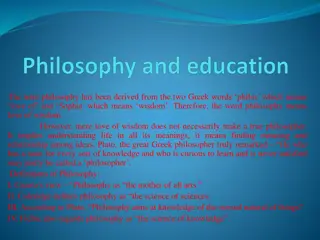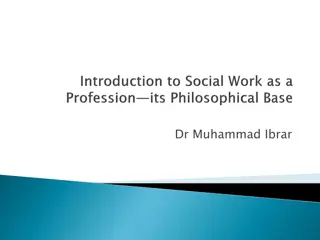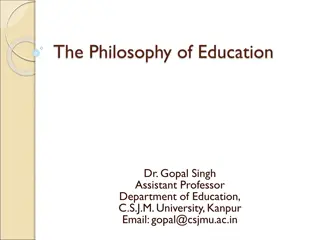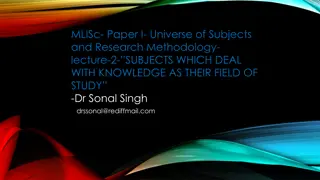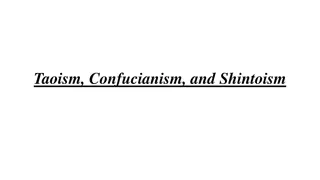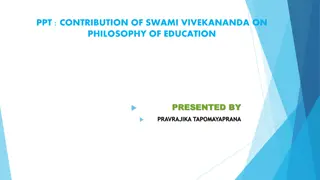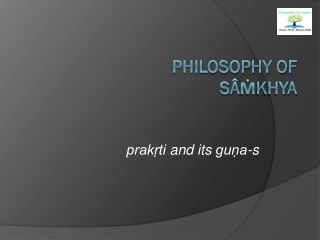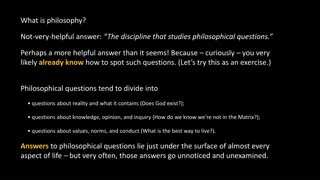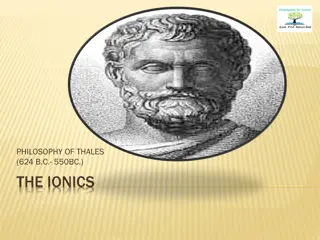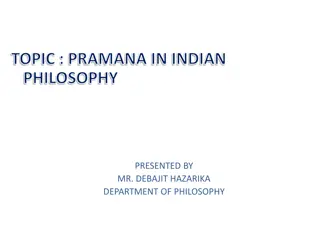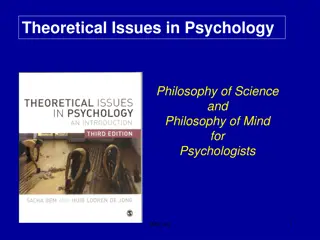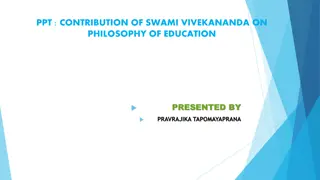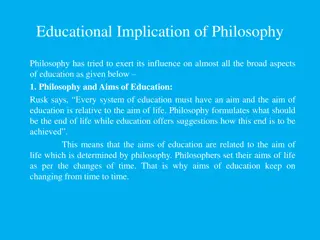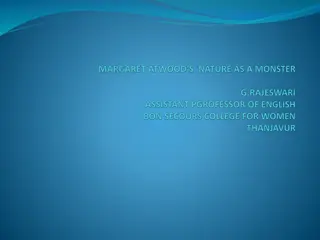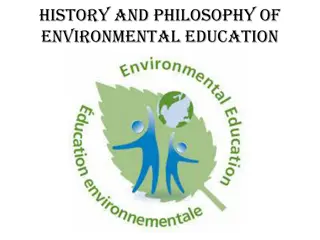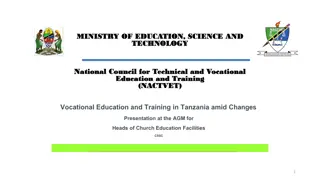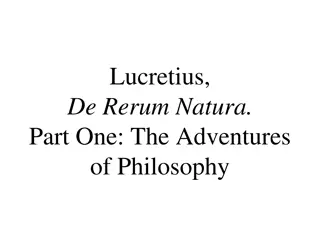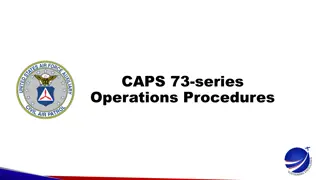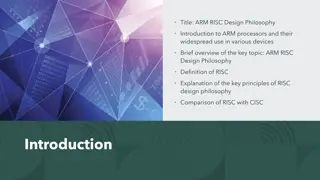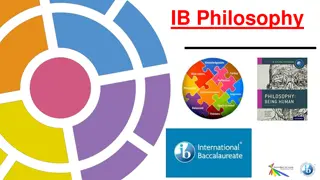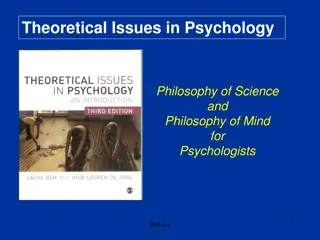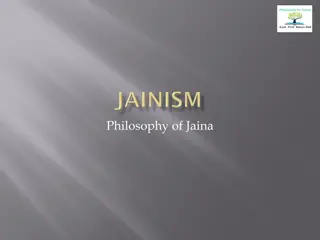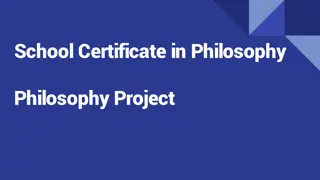Inspiring Nature and Education: The Philosophy of David Sobel
David Sobel, a prominent thinker in nature and education, advocates for Place-Based Education, connecting students with their local environment. Through his 7 Design Principles for Children and Nature, he underscores the importance of adventure, fantasy, imagination, and animal allies in fostering holistic learning experiences. Sobel's philosophy emphasizes the crucial role of nature in stimulating creativity, curiosity, and respect for the outdoors.
Download Presentation

Please find below an Image/Link to download the presentation.
The content on the website is provided AS IS for your information and personal use only. It may not be sold, licensed, or shared on other websites without obtaining consent from the author. Download presentation by click this link. If you encounter any issues during the download, it is possible that the publisher has removed the file from their server.
E N D
Presentation Transcript
DAVID SOBEL Thought of as one of the most important thinkers in the realm of nature and education, David Sobel has developed the philosophy of Place Based Education. This philosophy helps to create educational programs which connect students to the places they live. Director at the Centre for Place based Education Antioch New England, he has written many books on early childhood education and outdoor education. David Sobel raises his own children in the heart of the natural, local environment. Positioning nature at the heart of the curriculum stimulates creativity, arouses curiosity, and gives children a deep respect for the outdoors,
Place Based education has led David Sobel to identify a set of play themes that emerge when children experience free time in nature. David Sobels' 7 Design Principles for Children and Nature Here is an overview of these themes, named as the 7 design principles
Principle 1 : Adventure Adventure games Balancing, prancing and dancing through the natural world Cutting a path to a hidden place Establishing and testing boundaries Opportunity to make mistakes and learn from them Sobel notes, Environmental education needs to be kinesthetic, in the body. Children should stalk, balance, jump and scamper through the natural world. Activity with a physical challenge component speaks directly to children via the mon/body link.
Creating structured oppportunties for dramatic play Giving a safe space to help with the development of life skills and language Principle 2: Fantasy and Imagination Allowing for the experience of emotional events Providing a safe space for risk taking and facing challenges Development of co-operation and turn- taking skills Sobel notes, Environmental education needs to be kinesthetic, in the body. Children should stalk, balance, jump and scamper through the natural world. Activity with a physical challenge component speaks directly to children via the mon/body link.
Principle 3 : Animal Allies Children need to observe and understand animal life They need to become animals to gain an understanding of them Only then can we educate them about animals and interest them in animal welfare Sobel notes, If we aspire to developmentally appropriate science education, then the first talk is to become animals, to understand them from the inside out, before asking children to study them or save them.
- Aids in developing a sense of place and space - Creates opportunities to explore the surrounding environment through scavenger hunts, hide and seek games etc Principle 4 : Maps and Paths - Provides a sense of independance, trust and self- confidence Sobel notes, Finding shortcuts, figuring out what s around the next bend, following a map to a secret event. Children have an inborn desire to explore local geographies. Developing a local sense of place leads organically to a bioregional sense of place and hopefully a Biospheric consciousness.
Creates structured opportunities to retreat and sit quietly Allows children to build their own dens and shelters Allows children to name trees shrubs or special corners and areas Principle 5 : Special Places Sobel notes, Almost everyone remembers a fort, den, treehouse, or hidden corner in the back of a closet. Especially between ages eight and eleven, children like to find and create places where they can hideaway and retreat into their own found or constructed spaces.
Through play this allows children to create miniature worlds Providing real learning opportunities to discover how to problem solve and understand abstract real world ideas Principle 6 : Small Worlds Sobel notes, From sandboxes to dollhouses to model train sets, children love to create miniature worlds that they can play inside of. Through creating miniature representations of ecosystems, or neighbourhoods, we help children conceptually grasp the big picture. The creation of small worlds provides a concrete vehicle for understanding abstract ideas.
Through cooperative play and hide and seek games children develop social skills Principle 7 : Hunting and Gathering Games involving hidden treasure engage the primal hunter gatherer instinct in children Sobel notes, From a genetic perspective, we are still hunting and gathering organisms. Gathering and collecting anything compels us; searching for hidden treasure or the Holy Grail is as recurrent mythic form.
The difficulty with non-experiential environmental education If children are learning from a book or, more often, a screen, they have a detatchment to to thing they are learning about. The information learned is just that, information. It often has little or no link to their lives they or to the place they live in. Much of environmental education today has taken on a museum mentality, where nature is a composed exhibit on the other side of the glass. Children can look at it and study it, but they can t do anything with it. The message is: Nature is fragile. Look, but don t touch. Ironically, this take only photographs, leave only footprints mindset crops up in the policies and programs of many organizations trying to preserve the natural world and cultivate children s relationships to it. Ref: Look, Don t touch by David Sobel https://orionmagazine.org/article/look-dont-touch1/
Principles of forest Schools 2 Supports the development of a relationship between the learner and natural world 3 Allows the holistic development of the child 1 Regular visits to a woodland area 4 Uses a range of learner centered processes to develop a community of learners 5 Allows for supported risk taking 6 Led by qualified practitioners
Do FS principles align with Sobels? Forest School David Sobel Regular visits to a woodland area Special places, Small worlds, Maps and Paths 1. 1. Supports the development of a relationship between the learner and natural world 2. Animal allies, special places, maps and paths, hunting and gathering 2. Allows the holistic development of the child Fantasy and Imagination, Special places, Small worlds, maps and paths 3. 3. Uses a range of learner centered processes to develop a community of learners Fantasy and Imagination, Special places, Small worlds, maps and paths 4. 4. Adventure fantasy and Imagination 5. Allows for supported risk taking 5. All of the above developed under the skills of a qualified practitioner 6. Led by qualified practitioners 6.
Conclusion In forest school the outdoors is not seen as a place where children should be micromanaged, rather, it is a place where children can explore their own boundaries in all aspects of life, learn to take risks, develop relationships with other children, adults, animals and nature. David Sobel aims to rebuild connections with the local communities and give people, of all ages, a sense of place through using the locality to influence the curriculum. What better way to do this than through Forest Schools?


